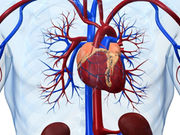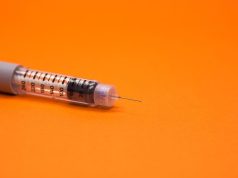Improvements in exercise capacity, anaerobic threshold, and oxygen uptake efficiency
TUESDAY, Oct. 18, 2016 (HealthDay News) — For patients with heart failure with preserved ejection fraction (HFpEF) with an exercise-induced increase in the ratio between early mitral inflow velocity and mitral annular early diastolic velocity (E/e’), spironolactone is associated with improved exercise capacity, according to a study published in the Oct. 25 issue of the Journal of the American College of Cardiology.
Wojciech Kosmala, M.D., Ph.D., from the Wroclaw Medical University in Poland, and colleagues conducted a randomized, placebo-controlled trial involving 150 subjects with exertional dyspnea. Patients were randomly allocated to six months of oral spironolactone or matching placebo. A total of 131 patients had completed therapy at follow-up (64 taking spironolactone and 67 taking placebo).
The researchers found that subjects had substantial exercise limitation at baseline. Improvements were seen in exercise capacity (P < 0.001), anaerobic threshold (P = 0.03), and oxygen uptake efficiency (P = 0.002) in the spironolactone group, with a reduction in E/e’ (P < 0.001). A significant interaction was seen for spironolactone and the change in E/e’ on peak oxygen uptake (P = 0.039).
“In patients with HFpEF and abnormal diastolic response to exertion, improvement in exercise E/e’ mediates the beneficial effect of spironolactone on exercise capacity,” the authors write. “Identification of exercise-induced increase in left ventricular filling pressure in patients with HFpEF may define a subgroup with warranting trial of spironolactone.”
Full Text (subscription or payment may be required)
Editorial (subscription or payment may be required)
Copyright © 2016 HealthDay. All rights reserved.








